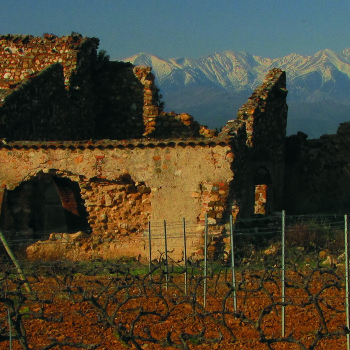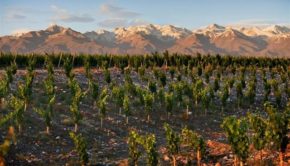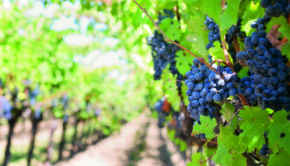Special Tasting: Eastern Mediterranean reds

Now that eastern Mediterranean wines are becoming better known in Ireland, Helen Coburn highlights some treats to try out in-store
16 September 2014
While New World wines have been conquering European markets, eastern Mediterranean wines are still surprisingly unfamiliar to most wine drinkers. However, this is beginning to change. A small selection of these wines can now be found in the Irish off-trade and recently we had a look at what’s on offer.
Least often seen is the republic of Macedonia. Formerly part of Yugoslavia, it has over 23,000 hectares of wine vineyard, 80% of it red. Macedonia has produced wines for thousands of years, and native grapes include stanusina crna, vranec and kratosija, this last being identical genetically to Italy’s primitivo and America’s zinfandel. Plantings of cabernet and merlot are increasing, often for blending with local varieties. As with southern Italy, however, the real impact on export markets is likely to be made through the skilled use of Macedonia’s native grapes. Market leaders at present include Stobi Estate and Vinarska Vizba Tikves, situated at the heart of the traditional wine district, and one of the oldest wineries in the Balkans.
Drinkers generally discover Turkish wine in the form of cheap plonk in holiday cafes. Not a good introduction! Like Macedonia, Turkey has grown grapes for at least 6,000 years and archaeologists think that the first wine ever made was produced in Turkish Anatolia. Today, however, most grapes go for table fruit and the wine industry is small, partly due to high production taxes imposed by the state. Useful local varieties include okuzgozu and bogaskere, with international grapes frequently used to beef up local blends. Coastal and hill sites are essential for premium wine in such a hot climate. Production has been dominated by larger companies such as Ksvadlidere and Kayra, but boutique wineries are springing up. Sevilen is a medium sized company producing wines on the cool Anatolian plateau as well as on coastal sites. Technologically savvy, it’s fast becoming one of the best known names on the export market.
Producers in Lebanon and Israel have had an uphill struggle to maintain their industry through wartime. Lebanon, despite having fewer estates, has better distribution in Europe. Hochar’s Musar is the big name but wines from Kefraya and Ksara are also readily available in Ireland. Wines are generally made from southern French varieties, aged in old oak, and have an easy, slightly dry charm. Some estates have taken a modern path, with higher alcohol values and a somewhat international style; to be frank, I find these less appealing.
Israel actually produces more wine than Lebanon and much of it is very good. Gallilee and the Golan district have proved their worth for premium wines, as the climate is not over-heated, while the Judean Hills can be excellent, provided that too long a hang time doesn’t lead to over ripeness. Three large wineries account for 80% of production but the boutique side is growing. Two good ones are Margalit and Yatir but the wines of the bigger estates can often be better value and just as good. The Mediterranean coastal plain has potential but the Gaza conflict is clearly an impediment. Aside from rocket attacks, some 300,000 people on the Israeli side of the border have been temporarily displaced during the present disturbance and harvesting in some districts could be a challenge.
As we know, Greece has had problems of a different kind. At present the main difficulty is the price of imported inputs, but the wine industry has proved surprisingly resilient and is growing its exports. As in Turkey, many drinkers first meet Greek wine in the form of holiday cheapies but, in fact, Greece is a relatively small producer, with a good deal of premium wine coming from mountain sites in the Peloponnese. Top grapes include assyrtiko for white and agiorgitiko and xinomavro for red, while producers have been restrained in their use of international varieties.
A lot of independent retailers now stock Lebanese wine while, for the rest, O’Briens and Marks & Spencer are your best bet. Prices tend to be mid range upwards as most of the wines are small production. For wine enthusiasts, they make great gift wines. If you are a wine retailer interested in extending your range to wines like this, there are some useful web contacts below. Here are some to try.
Gaia Assyrtiko 2011 (O’Briens €22). Here, natural yeasts are used to add richness to this elegant Greek white. Perfect fish wine.
Hatzidakis Santorini Assyrtiko Aidani 2013 (Le Caveau €24) From a Greek island producing wines since prehistoric time. It’s a small production so not cheap but it’s a perfect gift wine.
Tikves Vranec Merlot 2012 (Marks & Spencer €13.49). Easy blackberry and plum flavours make this Macedonian a good companion for grilled meats.
Sevilen Okuzgozu 2012 (M &S €15.49) Plummy, deeply hued wine from the mountains of eastern Turkey. Try with roast beef or game.
Anfora Trio 2012 (M&S €12.49). From Turkey’s Aegean region, this a blend of local kalecik karasi with shiraz and cabernet. Spicy style, ideal for barbeques.
Kefraya Les Breteches 2010 (James Nicholson €15) The berry fruits in this Lebanese are soft yet nicely structured. Easy drinking in the best sense.
Ksara Reserve de Couvent 2010 (Mitchells, O’Briens, Independents €18). Traditional Lebanese style, with slightly dry red fruit. Good with roasted white meats.
Hochar 2008 (O’Briens, Nicholson €18). The second wine of Lebanon’s legendary Chateau Musar, it’s got soft cherry and berry flavours. Very good with roast turkey and lamb.
Gaia Agiorgitiko Nemea 2009 (O’Briens €18.50). Founded by two agronomists, this Greek estate specialises in native grapes. Tasty red with a slightly dry finish.
Thymiopoulus Xinomavro Naoussa 2012 (M&S €15.49). From a Greek boutique winery owned by a young winemaker, the xinomavro grape is used here to create a brambly wine style, perfect with barbecues.
Recanati Petit Syrah Carignan 2011 (M&S €14). From Israel’s Judean Hills, this vintage was particularly ripe and is best with red meats and hearty casseroles.
Chateau Musar 2004 (Le Caveau, other outlets, prices and vintages vary). Le Caveau has a 2004 vintage at around €26, which is a fair price for this legendary classic. If you hunt around and don’t mind which year you buy, you may find cheaper bottles. Some vintages are splendid, others can dry out.
Further information:
Le Caveau: Claire@lecaveau.ie; secure@lecaveau.ie.
Mitchells: glasthule@mitchellandson.com
O’Briens: reception@obrienswines.ie
James Nicholson: shop@jnwine.com
Some of the national wine sites are not as informative as they should be and it’s worth browsing to get information from individual growers and enthusiasts. Some interesting ones are:
Macedonia: www.winesofmacedonia.org.en; www.stobi.co.uk; www.winesofbalkans.com. The site www.macedonian-heritage.gr deals with Greek Macedonia but there is interesting background on grapes, climates and food which also applies to the former Yugoslav region.
Le banon: www.winesoflebanon.co.uk. Most producers also have useful sites, while Lebanese restaurants are a great source of information and tasting.
Greece: www.newwinesofgreece.com; www.allaboutgreekwine.com; www.greekwine.gr.
Israel: www.wineisisrael.com; www.israel21c.org; www.-the-history-of-israeli-wine is a useful blog site.
Turkey: www.winesofturkey.org; www.janicsrobinson.com/articles/modern-turkish-tasting-notes.
************************************************



 Print
Print




Fans 0
Followers